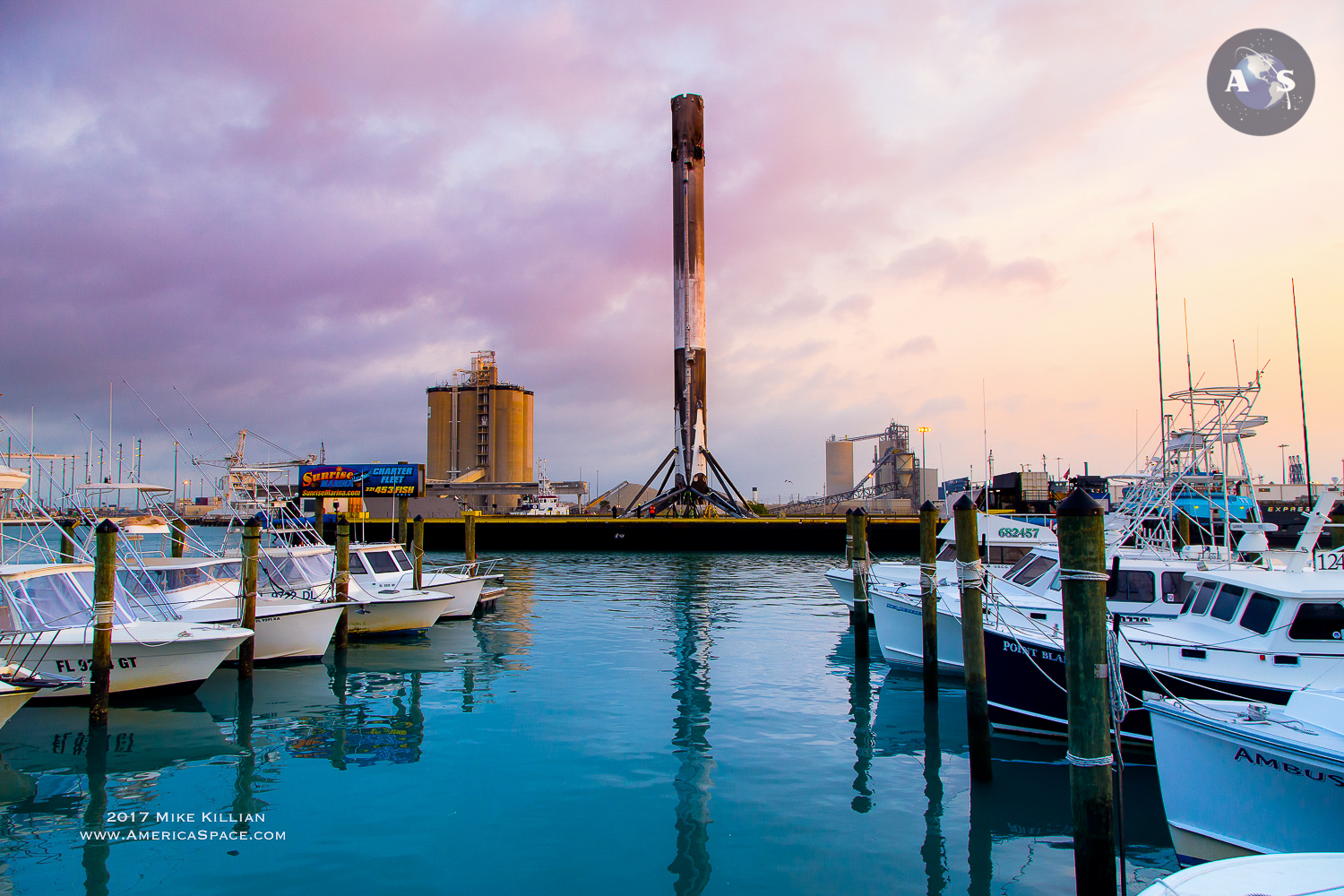
The first orbital rocket in history to be reused is now docked in Port Canaveral, having made a sunrise arrival this morning into the Cape after successfully launching the SES-10 satellite from Kennedy Space Center pad 39A just days ago.
As is becoming the norm for SpaceX, the company successfully landed the booster on their droneship, “Of Course I Still Love You” just minutes after launch, triumphantly showing all who have said they couldn’t fly reused boosters, that in fact, yes they can – and they just did.
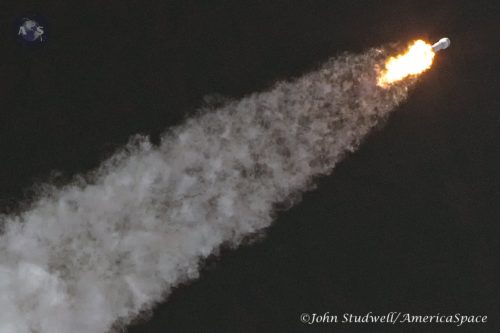
READ our full in-depth story on the successful launch and landing
As noted by AmericaSpace Senior Writer Ben Evans:
Preparations for the flight got underway in April 2016, when the Upgraded Falcon 9’s first stage roared back through the atmosphere—having earlier boosted the CRS-8 Dragon en-route to the International Space Station (ISS)—and alighted perfectly onto the Drone Ship in the Atlantic Ocean, about 420 miles (680 km) off the Cape Canaveral coastline.
From the outset, it was hoped that the returned CRS-8 first stage would be refurbished to become the first “re-flown” booster. Last August, it was revealed that SES-10 would be the customer and in January 2017 the refurbished stage underwent a static test-firing of its nine Merlin 1D+ engines at SpaceX’s Rocket Development Facility in McGregor, Texas. It was later delivered to KSC for pre-flight processing. In parallel, the 11,700-pound (5,300 kg) SES-10 satellite was delivered from prime contractor Airbus Defence & Space’s facility in Toulouse, France, to Florida, in mid-January and entered its final weeks of preparations for launch.
Since the mission was heading for geostationary altitude, about 22,300 miles (35,800 km) above the planet, significantly higher energy and velocity demands were brought to bear on the booster, when compared to journeys into low-Earth orbit. As a result, landing the booster back on the Cape’s Landing Zone-1 (LZ-1) was not possible for this flight. Instead, “Of Course I Still Love You” was drawn out of the Port of Jacksonville on Saturday afternoon, by means of the Elsbeth III tug, bound for a position about 420 miles (680 km) offshore, representing the first ASDS landing for a Florida-launched mission since last August’s JCSAT-16 mission.
Interestingly, the stage’s previous ASDS landing, back in April 2016, was actually the very first successful landing of a Falcon 9 on the drone ship.
At 6:35 p.m. March 30, a mere 8.5 minutes after leaving Earth for the second time, the first “re-used” orbital SpaceX booster alighted with precision on the Done Ship.
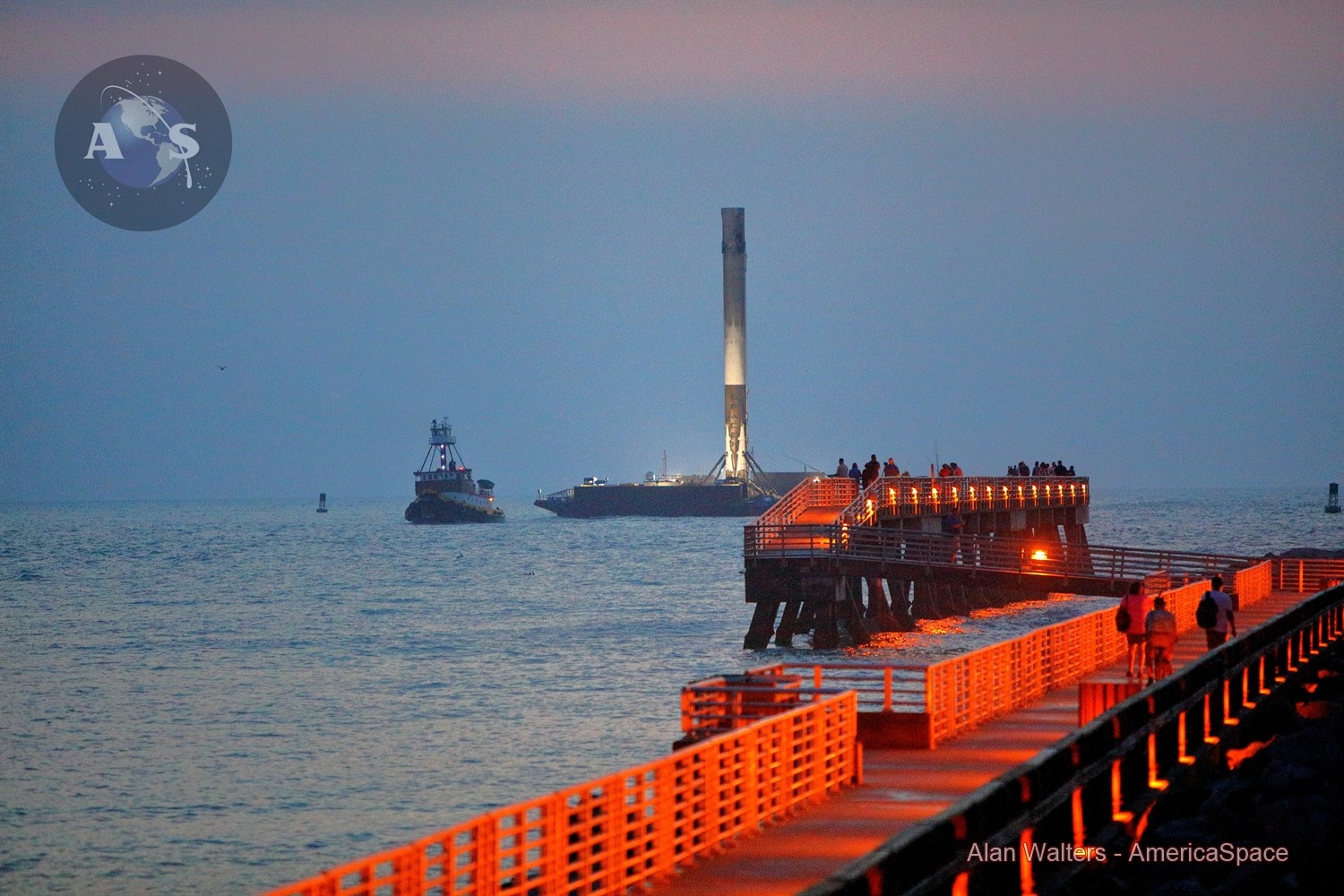
Now a piece of aerospace history, the company’s leader Elon Musk has stated the rocket will be given as a museum piece for Cape Canaveral (where and when exactly are TBD).
Ultimately, SpaceX is aiming for rapid turnaround time and reusability – only needing to refuel the rocket in order to fly again. They want to be able launch one mission, land the booster, then use the same rocket to launch another mission within 24 hours.
The company still has quite a bit of work to do to get to a rapid turnaround time with the same rocket. For the SES-10 booster, extensive work & inspections were done after its first flight (CRS-8) to make it “flyable” again. Hardware such as auxiliary components were swapped out, and hot fire tests were also conducted at the company’s Texas proving grounds, before sending the rocket back to Florida for its historic second flight.
And the company has yet another “first” on the near horizon, which will put them deep into ULA territory. They are preparing to launch their first mission for the United States National Reconnaissance Office (NRO), responsible for putting the country’s most secretive national security assets into space.
The mission, identified only as NROL-76, is targeted for launch off pad 39A no earlier than April, and with the classified nature of the mission, a launch “window” will likely not be released until the day before (or even day of) the flight.
That said, it is not yet known if the booster will attempt a landing on the Cape or offshore again, stay tuned…
.
BELOW: Photos of the SES-10 reused booster arriving back in Port Canaveral, FL.
CREDIT: Mike Killian / Alan Walters / John Kraus – www.AmericaSpace.com
.
.
Be sure to “LIKE” AmericaSpace on Facebook and follow us on Instagram & Twitter!
.
Missions » Commercial Space » SES »



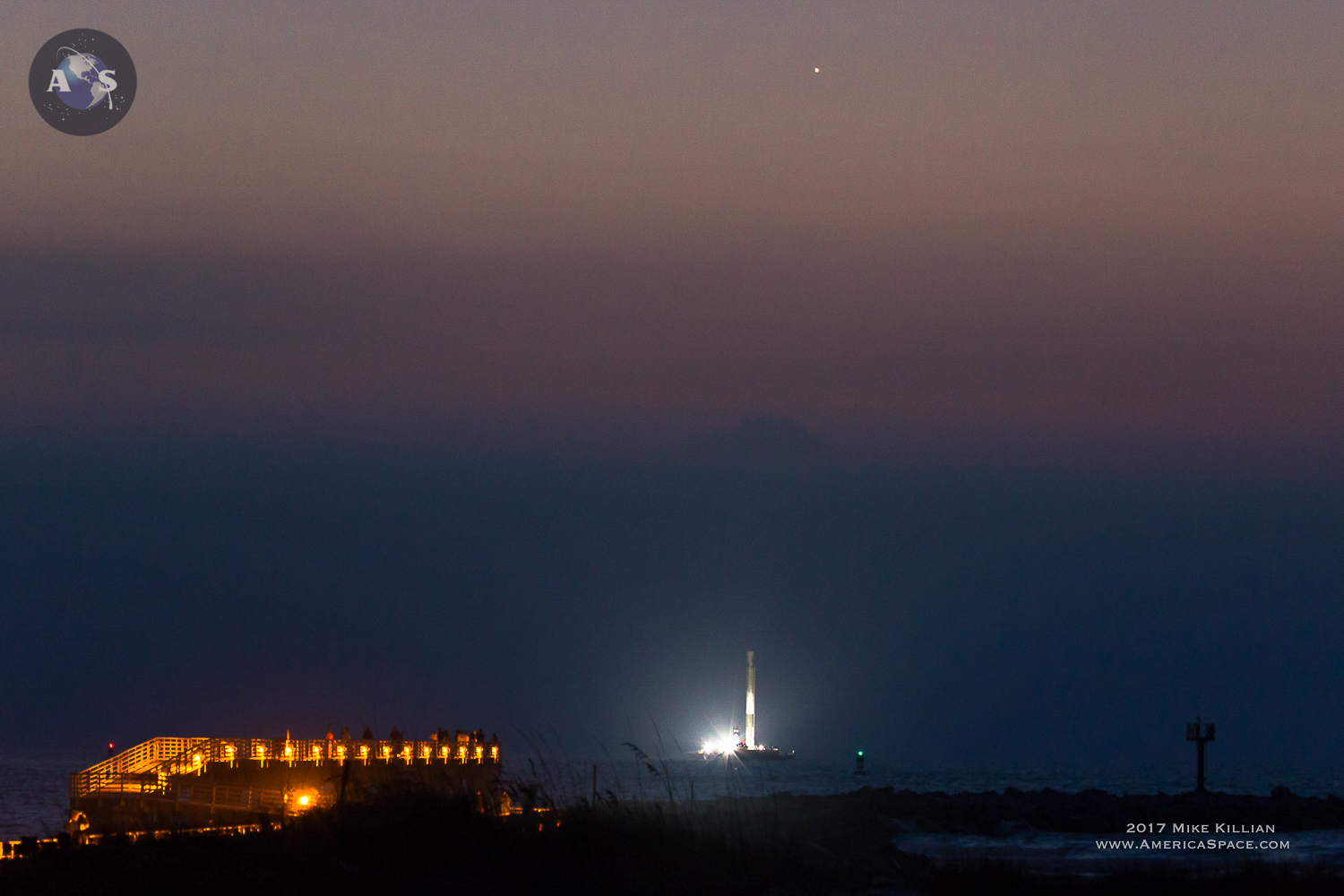
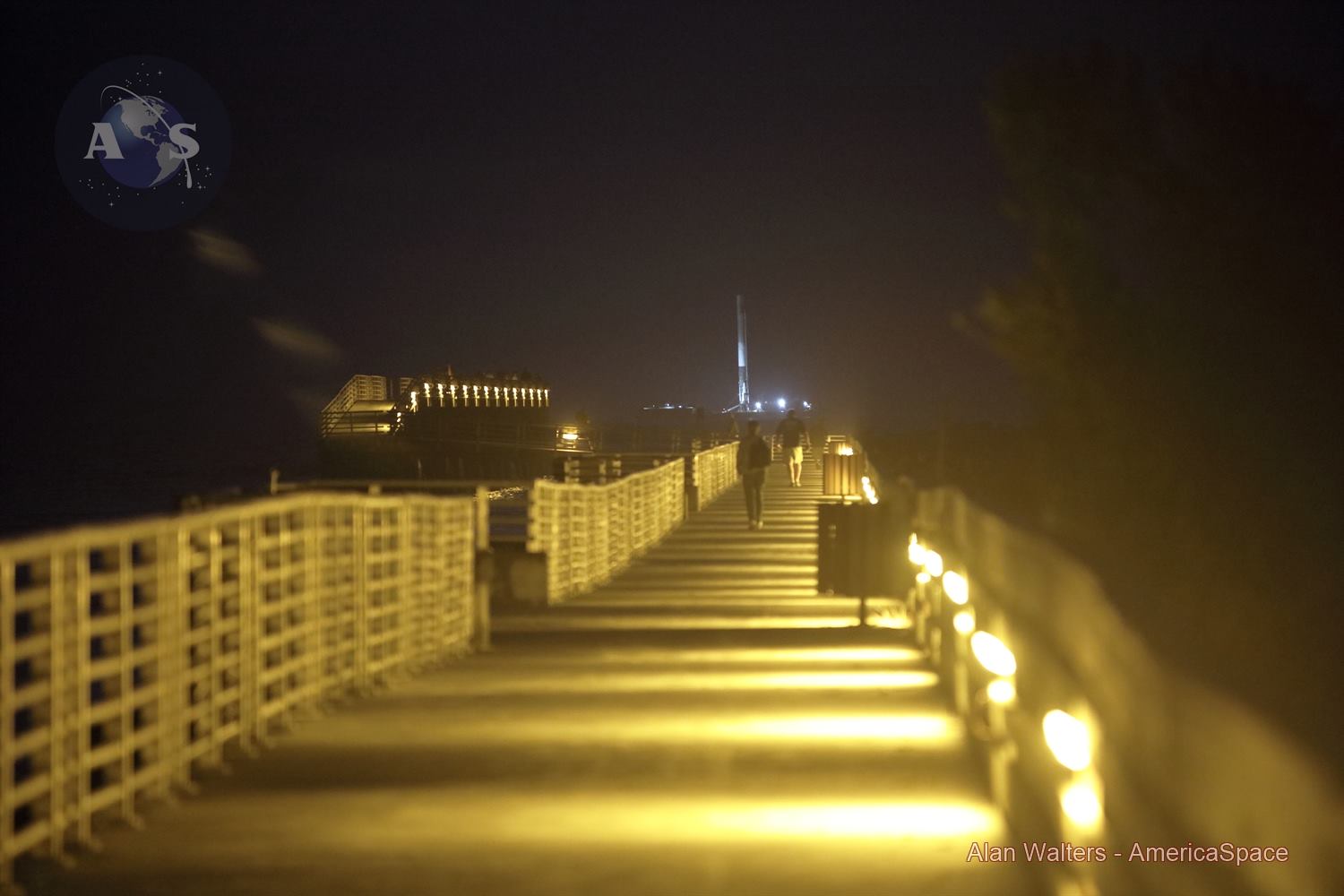
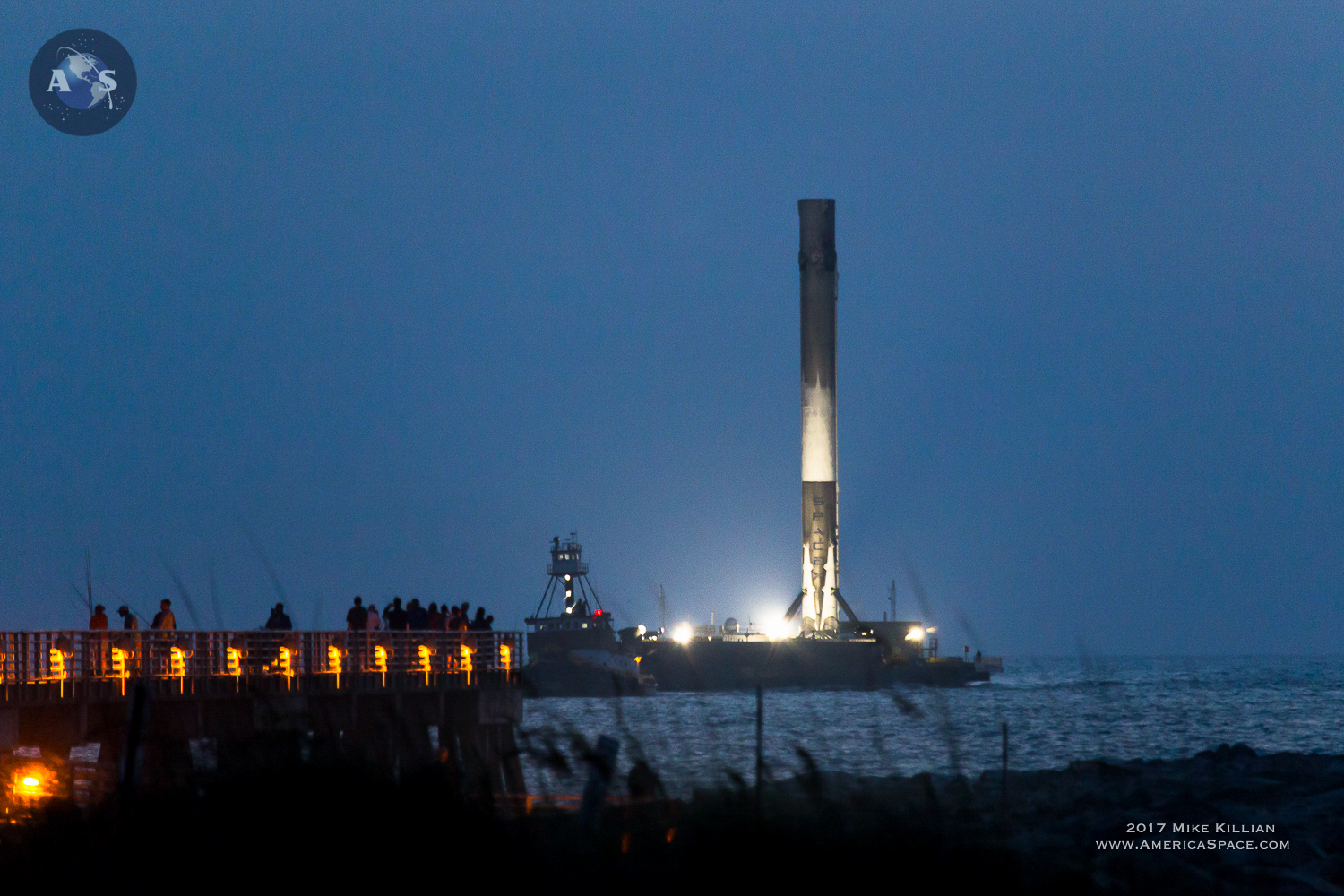
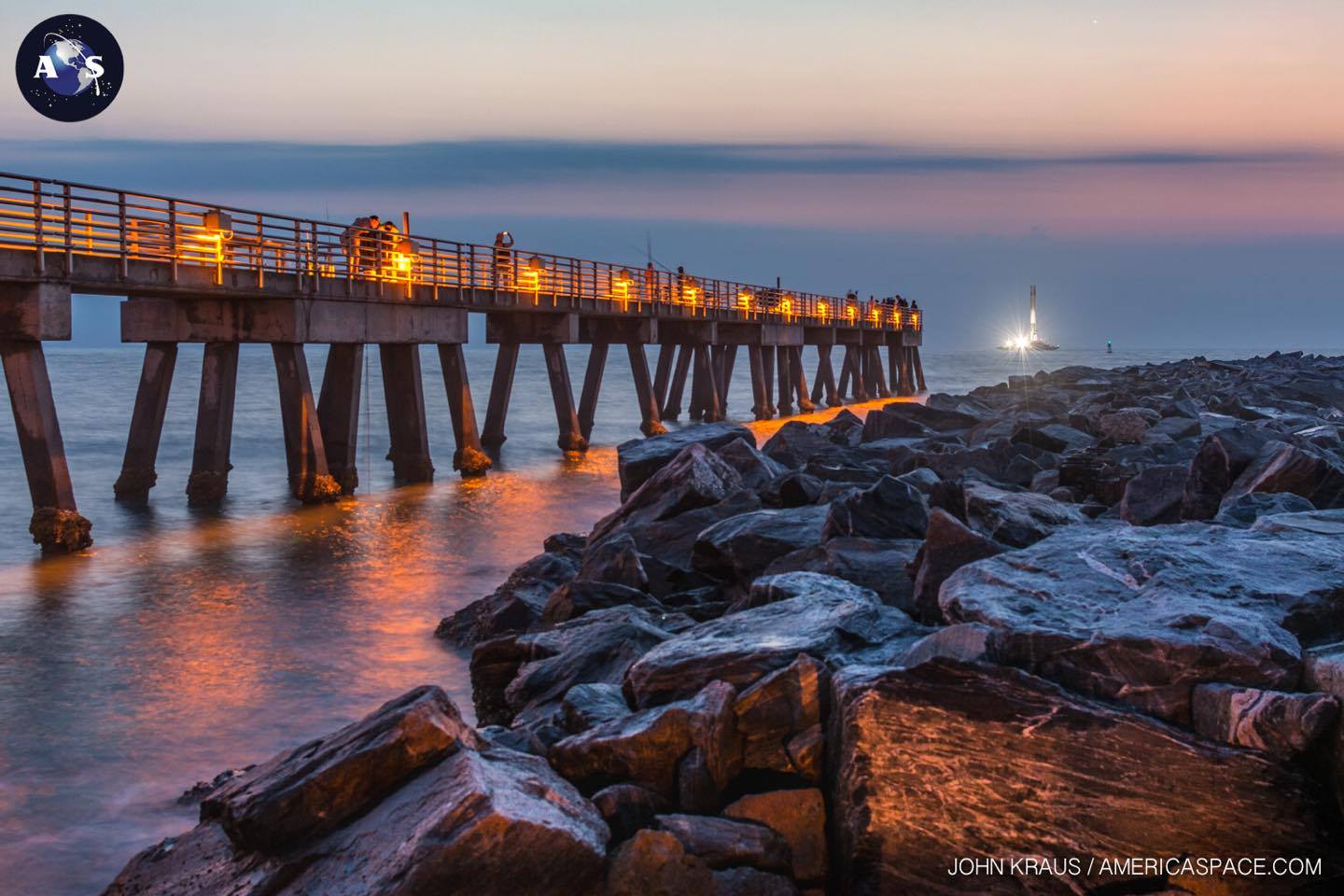
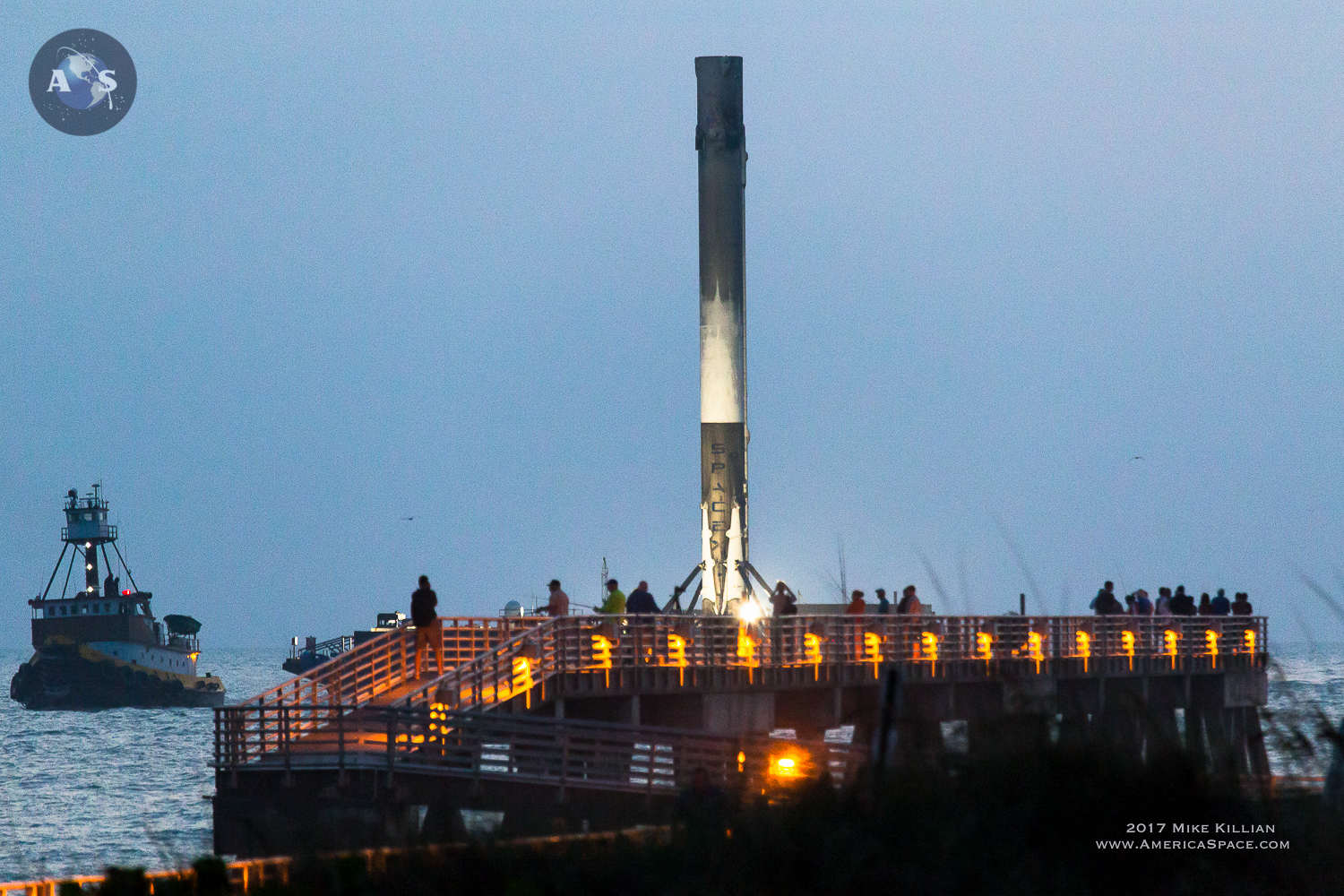
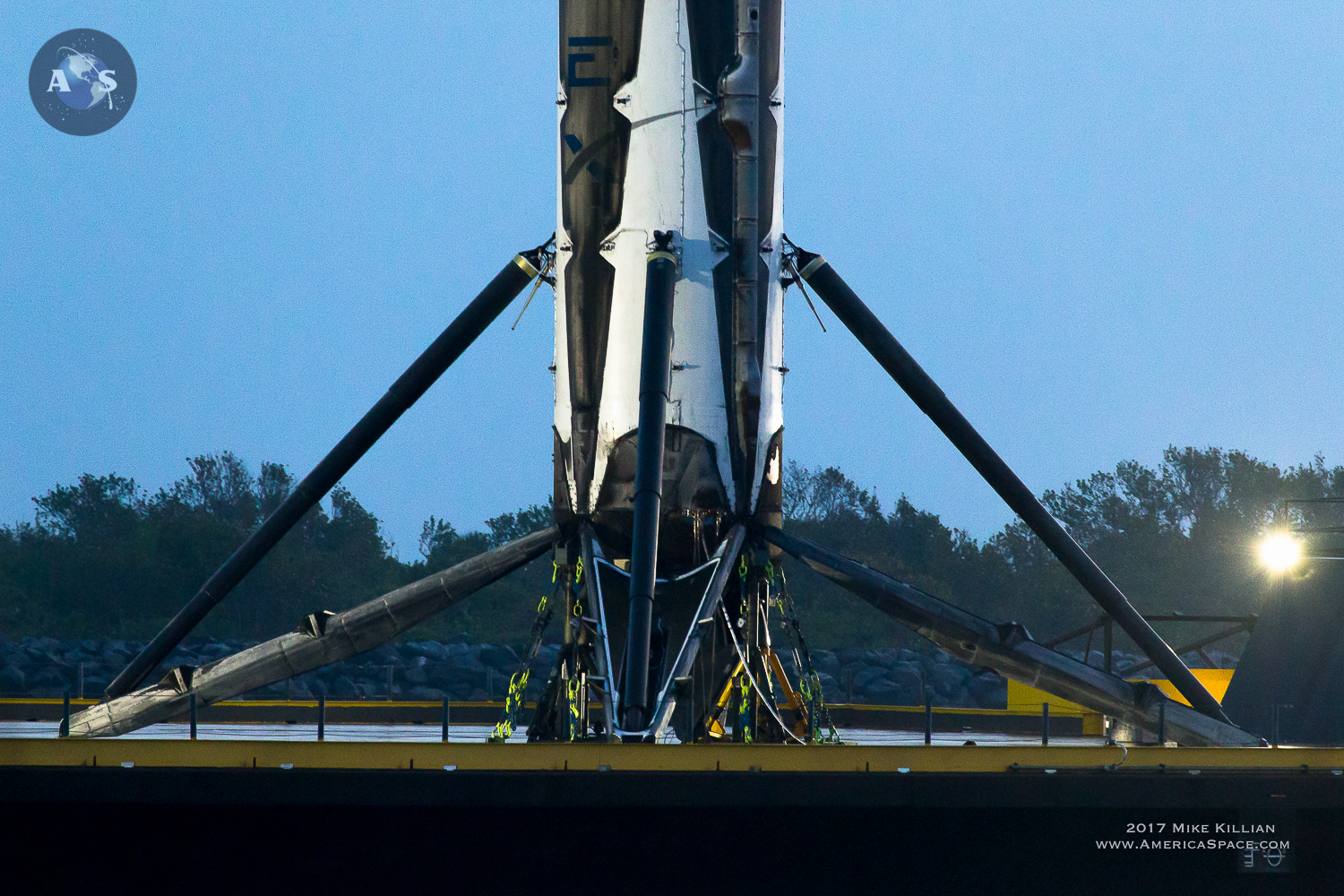
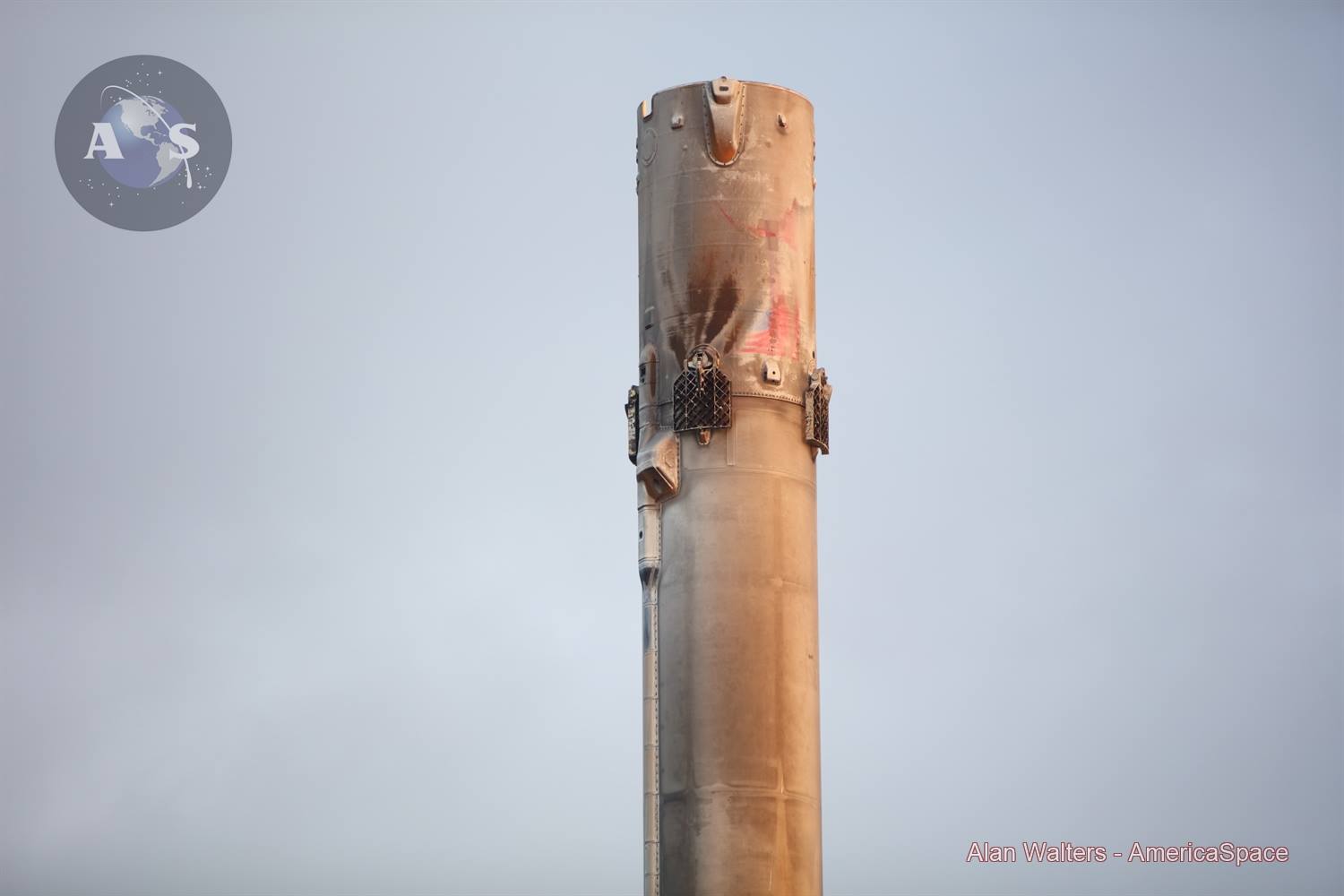
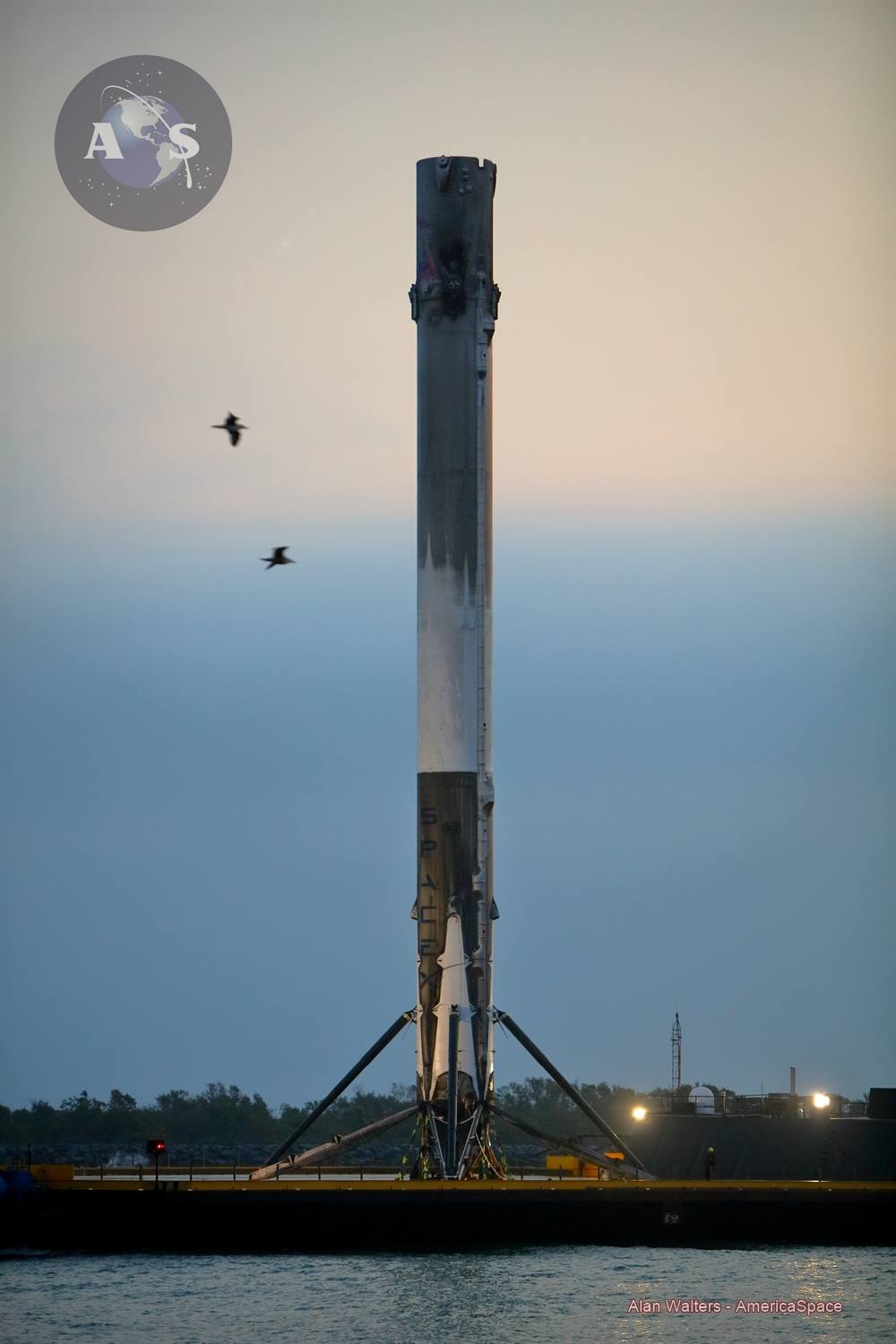
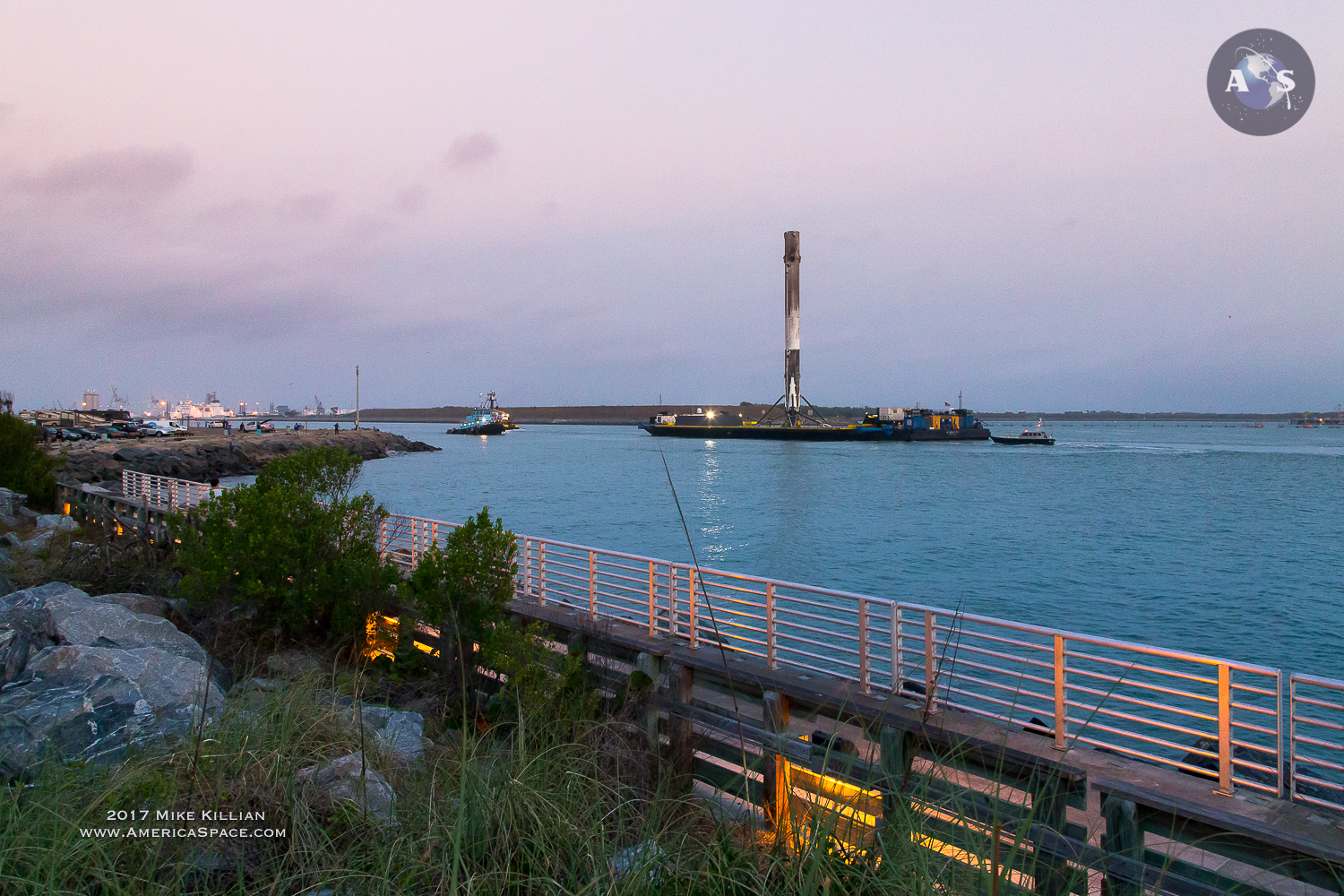
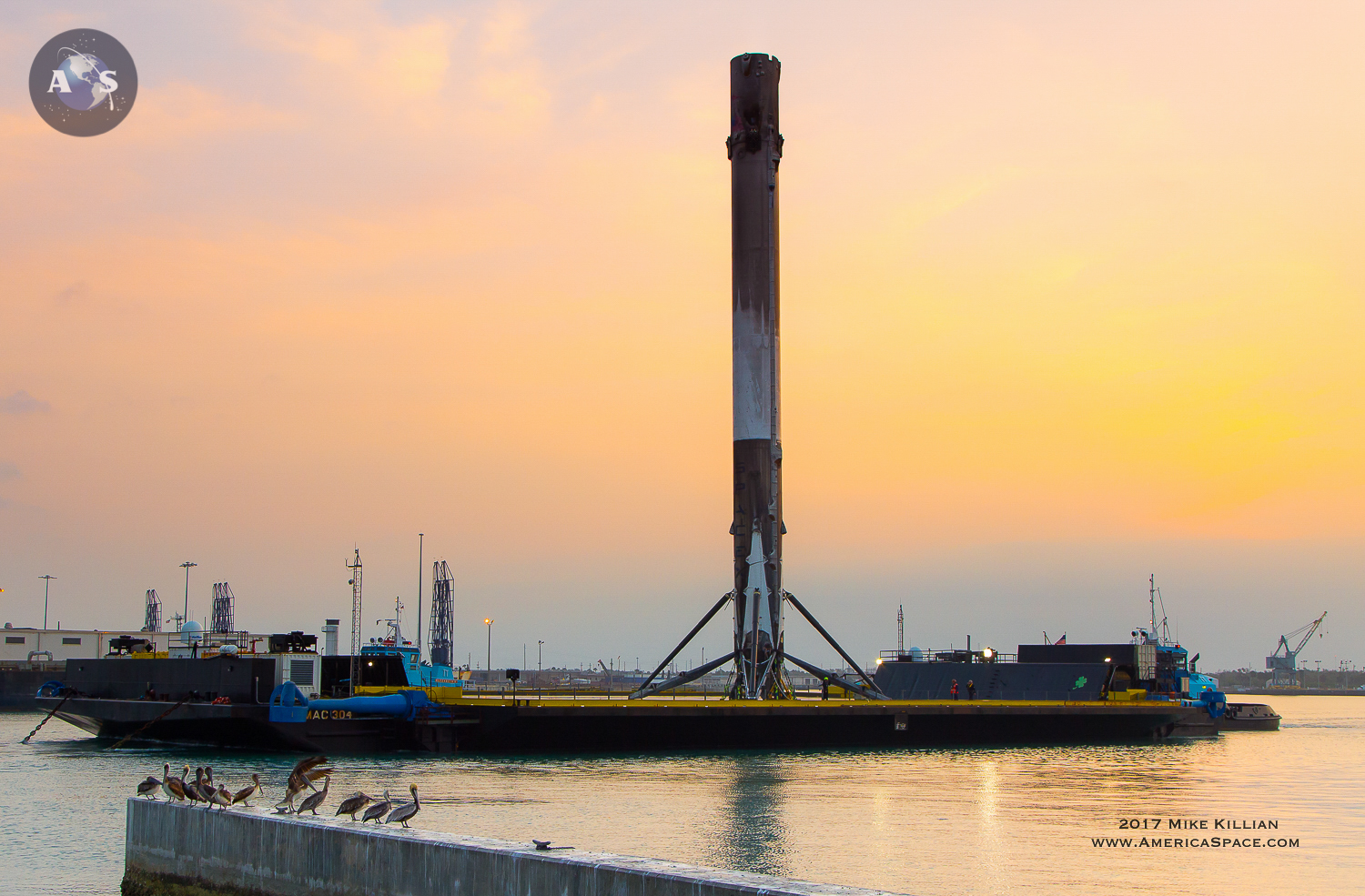
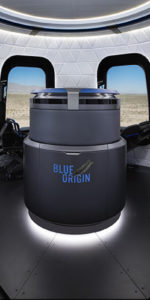

The fact of it is awesome.
It’s also how really neat it is that it’s so large compared to the little boats, any one of which it could probably put in orbit.
The cost of getting something into orbit is dropping below $1000/lb. If the ITS is built it will probably fall below $100/lb.
I will probably live to see it. I hope the remaining Apollo era astronauts do too.
The SpaceX ASDS are modified Marmac 300 series barges, they weigh about 2000 tons or 4,000,000 lbs.
With a Falcon-9 payload to LEO of approx. 50,000 lbs, you’d need at least 80 of these rockets to place an ASDS barge into orbit [once you saw the barge into 80 small pieces…ask first ;-)].
Those tugboats in Alen Walter’s beautiful photos, weigh about 300 tons, so you’d need about a dozen Falcon-9 launches to get one of those tug boats into orbit.
Falcon-9 is impressive, but tugboats & barges are solid steel with big-ass diesel engines, kinda heavy.
Sorry – it’s the engineer thing, we can’t help it.
As opposed to just ripping you a new one for your incomprehension, please note I used the word “boats” and not “barge”. They both float on water and begin with “b”, but otherwise are quite distinct from each other.
The Falcon 9 probably can orbit several of the day cruiser, 4 to 6 person boats in the marina which it dwarfs. I have never claimed it could orbit the barge it lands on.
I get the “engineer thing”, I are one.
Oh those boats. Nevermind.
Beautiful pictures. Thanks for posting them!